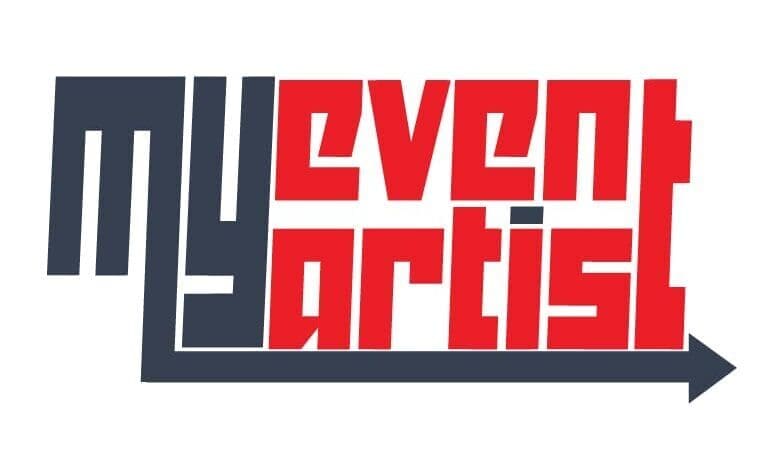Creating a compelling logo is a critical step in the branding process for any sports team, event, or business. A well-designed logo captures the essence of a brand, conveys its values, and resonates with its target audience. In Adobe Illustrator, a leading design tool, you have access to various features that can help you apply effective logo design principles.
At My Event Artist, we specialize in crafting custom logos for event organizers and sports teams, empowering them to establish strong visual identities. This post will explore essential logo design principles and how to effectively implement them in Adobe Illustrator to create impactful logos.
Understanding Key Logo Design Principles
1. Simplicity
Simplicity is at the heart of effective logo design. A simple logo is easy to recognize, versatile, and memorable.
- Why It Matters: Overly complex logos can confuse viewers and may not translate well across various media. A simple design can be easily manipulated for different sizes and applications.
Implementation in Illustrator:
- Focus on Clean Lines: Use the Pen Tool (P) to create clean, bold outlines.
- Limit Colors: Stick to a minimal color palette (ideally 2 to 3 colors) to enhance recognition and versatility.
2. Relevance
Your logo should be relevant to your brand and convey its story, values, or industry. Consider what your logo represents for your audience.
- Why It Matters: A relevant logo helps to establish a connection with your target audience, fostering recognition and trust.
Implementation in Illustrator:
- Incorporate Meaningful Symbols: Use the Shape Tool to create recognizable shapes or icons that resonate with your brand’s identity. For example, a basketball team’s logo might incorporate a basketball icon.
- Choose Appropriate Fonts: Select fonts that align with your brand’s personality. The Type Tool (T) in Illustrator allows you to manipulate text creatively—adjust the size, spacing, and style for the desired effect.
3. Distinctiveness
A unique logo sets your brand apart from competitors. Your logo should stand out and be easily distinguished from others within your industry.
- Why It Matters: A distinctive logo can help increase brand recognition and recall, ensuring that your audience remembers and identifies your brand quickly.
Implementation in Illustrator:
- Use Unique Shapes and Layouts: Experiment with custom shapes using the Pen Tool to create abstract designs or symbols that are not commonly found elsewhere in your industry.
- Combine Elements Creatively: Blend elements or symbols to create a hybrid logo that captures your unique brand identity.
4. Versatility
Your logo should work across various applications—print, digital, merchandise, and more. A versatile logo maintains its integrity and recognizability irrespective of where it’s used.
- Why It Matters: If a logo cannot be scaled or reproduced effectively in different formats, it limits the brand’s marketing and promotional opportunities.
Implementation in Illustrator:
- Test Scalability: Create your logo in vector format, ensuring it can be resized without losing quality. Regularly use the Artboard Tool (Shift + O) to check how your logo appears at different sizes.
- Adaptability: Design variations of your logo for different uses, such as a simplified version for small applications (like business cards) and a more detailed version for large banners.
5. Timelessness
A logo should be designed with longevity in mind, avoiding trends that may quickly fade away, which can necessitate frequent redesigns.
- Why It Matters: A timeless logo builds lasting recognition and minimizes the need for rebranding efforts.
Implementation in Illustrator:
- Focus on Classic Shapes and Fonts: Consider using shapes and typographic styles that have stood the test of time. Simple geometric shapes and clean fonts often yield timeless designs.
- Avoid Trends: While it’s important to be aware of current design trends, prioritize creating a logo that emphasizes classic design principles that remain relevant.
6. Color Psychology
Colors evoke emotions and associations. Understanding the psychology of colors can help you make informed choices for your logo.
- Why It Matters: The right color choices can enhance your logo’s impact and ensure it resonates with your audience.
Implementation in Illustrator:
- Choose Your Palette Wisely: Utilize the Color Picker and Swatch Libraries to select colors that align with the emotions you want to convey.
- Test Combinations: Use the Gradient Tool (G) to explore color combinations effectively, providing depth and interest while adhering to the brand’s message.
Step-by-Step Process of Designing a Logo in Illustrator
Now that we’ve covered key principles, let’s walk through a practical process of creating a logo in Illustrator with these principles in mind.
1. Brainstorm and Sketch Concepts
- Begin by brainstorming ideas that align with your brand values.
- Create rough hand-drawn sketches to visualize your ideas. Focus on applying the principles discussed above.
2. Set Up Your Document
- Open Illustrator and create a new document (File > New). Choose a square artboard size (1000 x 1000 pixels) for logo design.
3. Create Outline Shapes
- Use the Shape Tools (rectangle, ellipse, polygons) to create basic shapes for your logo design.
- Combine shapes using the Pathfinder Tool (Window > Pathfinder) to merge or divide shapes, creating unique forms.
4. Add Text
- Use the Type Tool (T) to add name elements to your logo. Ensure the font reflects your brand personality.
- Adjust size, kerning, and tracking using the Character panel (Window > Type > Character).
5. Enhance with Color
- Select each element of your logo and experiment with color using the Color Guide (Window > Color Guide) to find harmonious combinations.
- Apply gradients using the Gradient Tool (G) to provide depth.
6. Refine Your Design
- Review your design and make necessary adjustments. Focus on simplicity, relevance, and distinctiveness.
- Ensure your logo scales well. Use the Artboard Tool to check if it looks good at smaller and larger sizes.
7. Gather Feedback and Iterate
- Share your design with colleagues or target audience members and gather feedback.
- Make adjustments based on constructive criticism.
8. Export Your Logo
- When satisfied, export your logo for various applications.
- Use File > Export > Export As and choose formats like SVG for web or EPS for print.
Conclusion: Implementing Effective Logo Design Principles in Illustrator
By utilizing the principles of simplicity, relevance, distinctiveness, versatility, timelessness, and color psychology, you can create exceptional logos that resonate with audiences. Adobe Illustrator provides the perfect set of tools to bring these concepts to life, ensuring your sports brand stands out.
At My Event Artist, we are dedicated to helping you bring your logo vision to fruition through our expert design services. Explore our extensive collection of print-ready vector logo designs, customizable fonts, and more at My Event Artist Shop. If you’re interested in a custom logo design tailored to your specific needs, feel free to reach out today!
Keywords: logo design principles, Adobe Illustrator, sports branding, graphic design, branding strategies, effective design
#logodesignprinciples, #AdobeIllustrator, #sportsbranding, #graphicdesign, #brandingstrategies, #effectivedesign



Leave a Reply